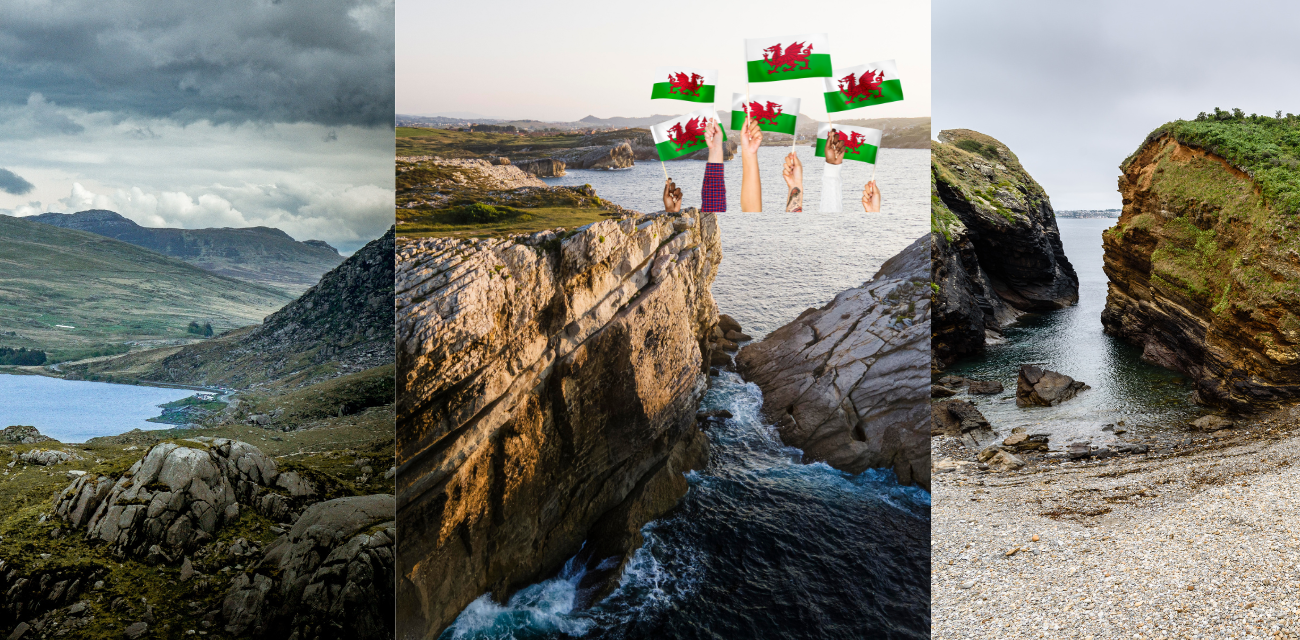Exploring Wales’ Natural Treasures: A Guide to Its National Parks
Wales is a country known for its stunning natural beauty, with rolling hills, rugged coastlines, and breathtaking mountains. To protect and celebrate this unique landscape, Wales has three amazing National Parks. These parks not only preserve our beautiful countryside but also help protect the wildlife that calls it home. They are places where both locals and visitors can explore nature, learn about our heritage, and enjoy outdoor adventures.
Wales’ National Parks are Snowdonia (Eryri), Pembrokeshire Coast, and the Brecon Beacons (Bannau Brycheiniog). Each one offers something special, from mountain hikes to seaside strolls. Let’s explore why they matter so much!
The Three National Parks of Wales
Snowdonia National Park (Eryri)
Snowdonia National Park (Eryri) is the largest national park in Wales, covering 823 square miles. It is home to the highest peak in both Wales and England, Snowdon (Yr Wyddfa), which stands at an impressive 1,085 meters (3,560 feet). The park has a population of over 26,000 people and is renowned for its nine mountain ranges, 15 peaks towering above 3,000 feet, and a stunning 23-mile coastline. Known as the wettest area in Wales, Snowdonia boasts a rich cultural heritage that spans prehistoric times, Roman occupation, and a blend of influences from Vikings, Anglo-Saxons, Normans, and the Mediaeval Princes of Wales. This historical depth is reflected in its iconic sites, such as Harlech Castle.
There has been a growing movement to favor the park’s Welsh name, “Eryri,” over “Snowdonia,” with Eryri translating to “highlands” in Welsh—a name rooted in the word “eryr,” which means “ridge” or “upland region.” Contrary to a popular misconception, Eryri does not mean “place of eagles.”
Eryri attracts millions of adventurous visitors each year, offering a wide range of activities. These include guided tours from nearby cities like Manchester and Liverpool, with prices for full-day trips ranging from Rs 18,067 to Rs 25,021. Adventurous tourists can also experience thrilling activities like Zip World Llechwedd, which costs Rs 10,462, and kayak adventures on Llyn Padarn for Rs 19,843. Hiking, climbing, and mountaineering are also popular, with multi-day courses costing upwards of Rs 72,278. Visitors can enjoy the heritage of Ffestiniog Railway, the scenic Coed-y-Brenin Forest for mountain biking, and the beautiful beaches like Harlech.
The park is freely accessible, with camping and wild camping facilities available, making it an attractive destination for nature lovers and adventure seekers alike. Snowdonia National Park’s breathtaking landscapes, cultural significance, and wide range of outdoor activities make it one of the most beloved destinations in Wales.
Pembrokeshire Coast National Park
Pembrokeshire Coast National Park, established in 1952, is a stunning expanse of natural beauty located along the southwestern coast of Wales. Spanning approximately 232.5 square miles, it features 186 miles of breathtaking coastline that includes rugged clifftops, expansive beaches, and winding estuaries. The park is renowned for its striking geological formations, from majestic headlands to tranquil coves, making it a favorite destination for outdoor enthusiasts and nature lovers alike.
One of the park’s highlights is the Preseli Hills, known for their diverse wildlife and rich history. These hills are famously associated with the Stonehenge bluestones, believed to have originated from this region. The area is steeped in Welsh heritage, as legend suggests it is the birthplace of St. David, the patron saint of Wales. This cultural richness is complemented by an array of historic sites, including ancient castles and a magnificent cathedral.
The Pembrokeshire Coast National Park is also home to some unique coastal features, with a variety of landscapes ranging from sandy beaches to dramatic cliffs. Notably, the park gained fame as a filming location for Harry Potter and the Deathly Hallows, with Freshwater West serving as the backdrop for Shell Cottage, home of Bill and Fleur Weasley.
Despite being one of the smallest national parks in the UK, Pembrokeshire offers a wealth of activities for visitors. The Pembrokeshire Coast Path is a popular attraction, providing hikers with unparalleled views of the coastline. The park’s diverse ecosystems support a wide array of wildlife, including seabirds and marine life, making it a prime spot for birdwatching and coastal exploration.
Haverfordwest, the county town, serves as the administrative hub for Pembrokeshire, combining modern amenities with historical charm, including a Norman castle and ancient churches. The park’s accessibility, along with its picturesque towns, tranquil beaches, and rich cultural heritage, makes Pembrokeshire Coast National Park a must-visit destination for anyone looking to experience the natural splendor and historical depth of Wales.
Brecon Beacons National Park (Bannau Brycheiniog)
The Brecon Beacons National Park (Bannau Brycheiniog) is a stunning natural reserve located in South and Mid Wales, covering approximately 520 square miles (about 1,345 km²) across parts of Powys, Carmarthenshire, Monmouthshire, Rhondda, and Merthyr Tydfil, situated just west of Herefordshire. This park is home to South Wales’s highest mountain, Pen y Fan, which stands at 886 meters (2,907 feet). Other notable peaks include Corn Du (873 meters), Cribyn (795 meters), Fan y Bîg (719 meters), Bwlch y Ddwyallt (754 meters), and Waun Rydd (769 meters). The Brecon Beacons is renowned for its diverse landscapes, offering a mix of rolling countryside, valleys, hillsides, forests, lakes, waterfalls, and caves, making it a haven for outdoor enthusiasts.
One of the park’s standout features is its spectacular waterfalls, particularly along the Four Falls Trail, where visitors can experience breathtaking views and ancient woodlands. In 2012, the park became the first International Dark Sky Reserve in Wales and only the fifth in the world, providing an exceptional location for stargazing due to its minimal light pollution. The name Bannau Brycheiniog translates to “The Peaks of Brychan’s Kingdom,” reflecting its historical roots tied to the old kingdom of King Brychan. The market town of Brecon, situated within the park, is known for its annual jazz festival, rich history, military connections, and impressive cathedral. It has been ranked as the 66th best place to live in the UK and is considered the third most naturally beautiful area in the country.
As of mid-2018, the Brecon Beacons National Park had an estimated population of over 33,800, making it the most populous national park in Wales, with a density of approximately 25 people per square kilometer. The park offers a wealth of outdoor activities, including various walking and hiking trails suitable for all skill levels. It is also recognized as one of three designated wild country areas in Wales, alongside Snowdonia and Mid Wales. The nearest airport, Cardiff International Airport, is approximately one hour away, providing easy access for visitors from other regions.
The National Park Authority owns about 13.5% of the land within the park (approximately 19,000 hectares), while other public bodies such as the Forestry Commission (7.7%), Welsh Water (4.2%), National Trust (3.7%), and Countryside Council for Wales (0.8%) also hold land within the park. The Brecon Beacons is celebrated for its arctic-alpine cliff flora and species-rich limestone grasslands, symbolizing the iconic beauty of South Wales and attracting thousands of visitors each year. With its breathtaking waterfalls, highest peaks, and designation as a dark sky reserve, the Brecon Beacons stands out as a significant destination for nature enthusiasts, offering a blend of stunning natural beauty, rich history, and diverse outdoor activities.
Future of National Parks in Wales
The future of national parks in Wales looks promising, as outlined in the Welsh Government’s Programme for Government (2021-2026), which emphasizes the designation of a new National Park based on the existing Clwydian Range and Dee Valley Area of Outstanding Natural Beauty (AONB). This proposal aims to enhance the natural landscapes and conserve the unique wildlife and cultural heritage of the area, further enriching Wales’s already diverse national park system.
Wales is home to three established national parks: Snowdonia, Brecon Beacons, and Pembrokeshire Coast, which collectively cover around 20% of the country’s land area. Snowdonia, designated in 1951, is the largest, encompassing 823 square miles (about 2,130 km²). Each park offers distinctive characteristics and attractions, such as the rugged mountains of Snowdonia and the stunning coastal views of Pembrokeshire.
The Welsh Government’s commitment to developing new national parks reflects a broader initiative known as Future Landscapes Wales, which seeks to maximize the potential of all landscapes in Wales. This initiative addresses contemporary challenges, such as climate change and biodiversity loss, while ensuring that natural beauty and recreational opportunities are preserved for future generations.
The main aims of national parks in Wales are twofold: to conserve and enhance natural beauty, wildlife, and cultural heritage; and to promote public understanding and enjoyment of these special qualities. By creating a new national park, the Welsh Government intends to provide more opportunities for local communities and visitors to engage with and appreciate the natural environment.
Looking ahead, national parks in Wales will likely play a vital role in addressing the impacts of climate change, particularly in coastal and low-lying areas vulnerable to rising sea levels. As local and global leaders continue to discuss environmental challenges, the importance of preserving and expanding Wales’s national parks becomes increasingly apparent. By adapting to contemporary issues while safeguarding these treasured landscapes, Wales can ensure that its national parks remain a source of pride, inspiration, and enjoyment for both residents and visitors alike.
Conclusion
Wales boasts three magnificent National Parks: Snowdonia, Pembrokeshire Coast, and the Brecon Beacons. Each park is a testament to the country’s rich natural heritage, offering diverse landscapes, unique wildlife, and numerous recreational opportunities. From the towering peaks of Snowdon in Eryri to the stunning coastal trails of Pembrokeshire and the enchanting waterfalls of the Brecon Beacons, these parks not only enhance our appreciation of nature but also serve as vital habitats for countless species.
As stewards of this natural beauty, it is our responsibility to explore and support the conservation of these incredible areas. Whether you’re an adventurous hiker, a serene beachgoer, or a history enthusiast, the National Parks of Wales invite you to discover their wonders. By visiting and participating in conservation efforts, we can ensure that these treasures remain protected for future generations to enjoy. So pack your bags, hit the trails, and experience the breathtaking landscapes of Wales—let’s celebrate and preserve these national treasures together!


